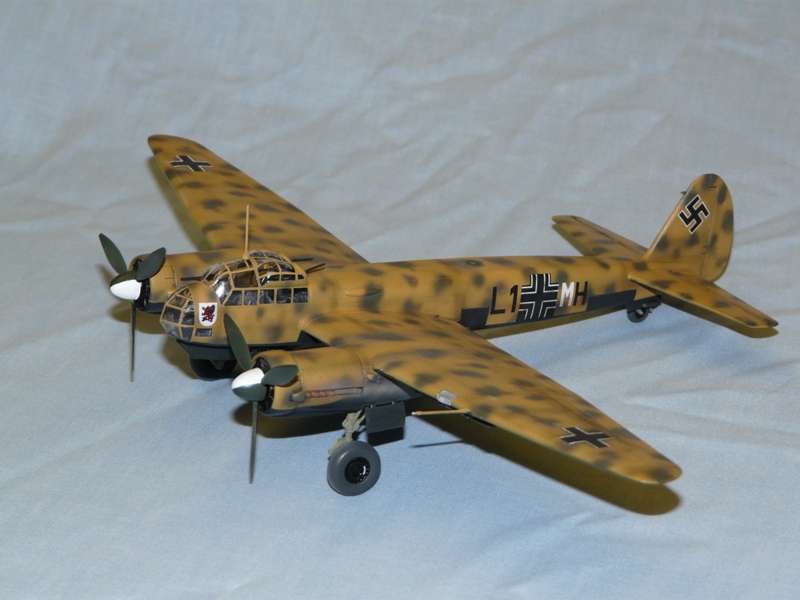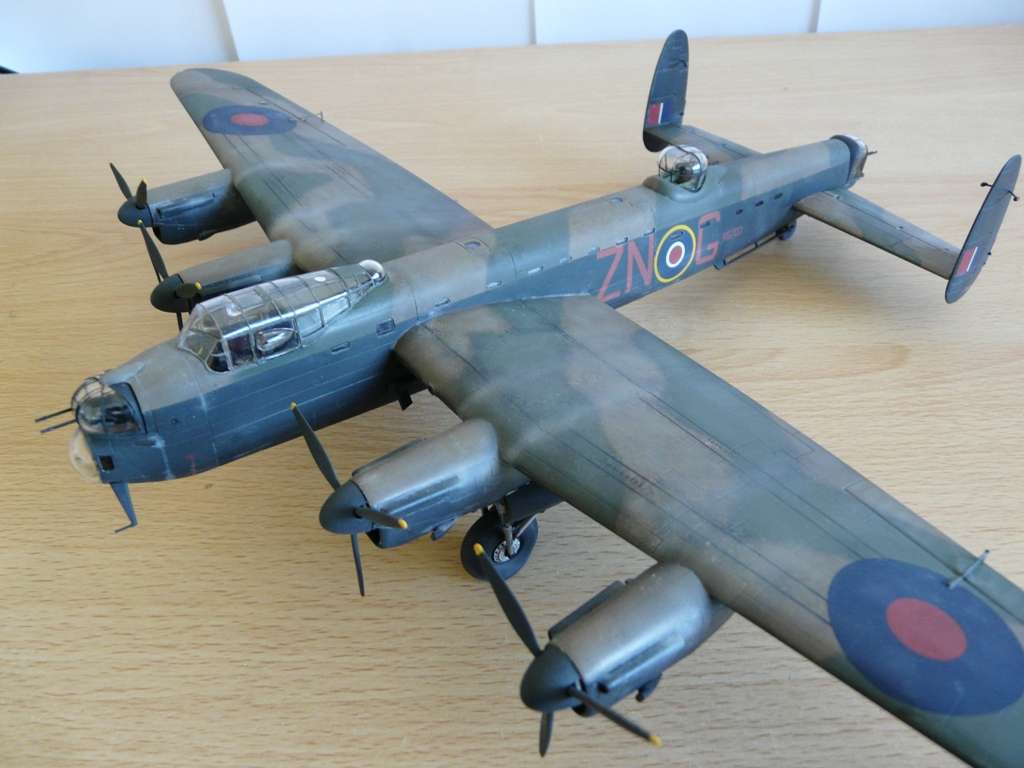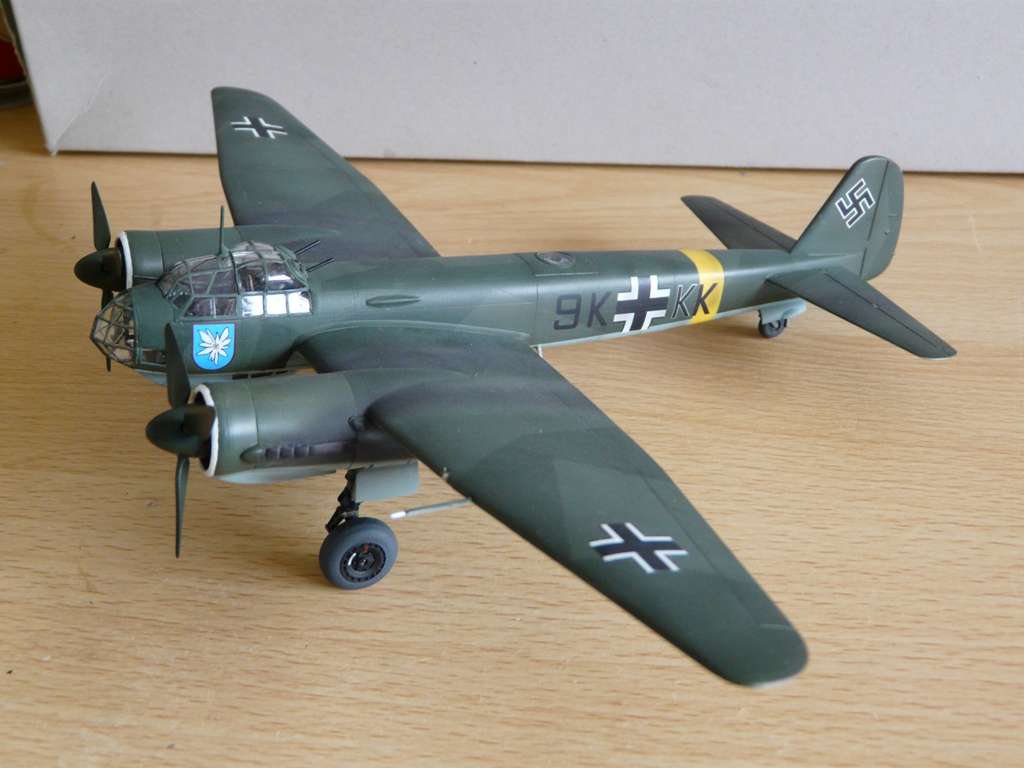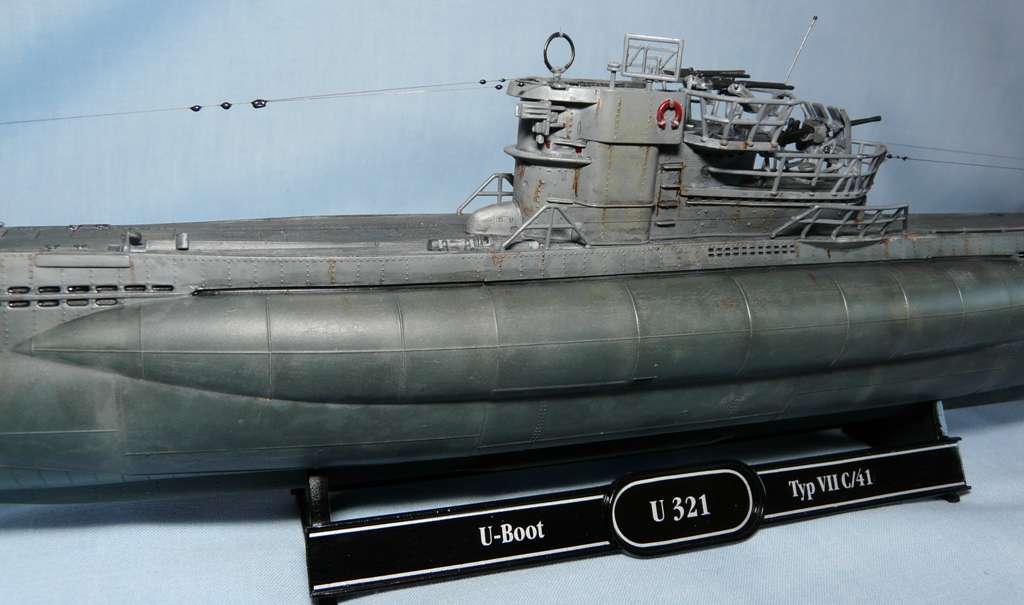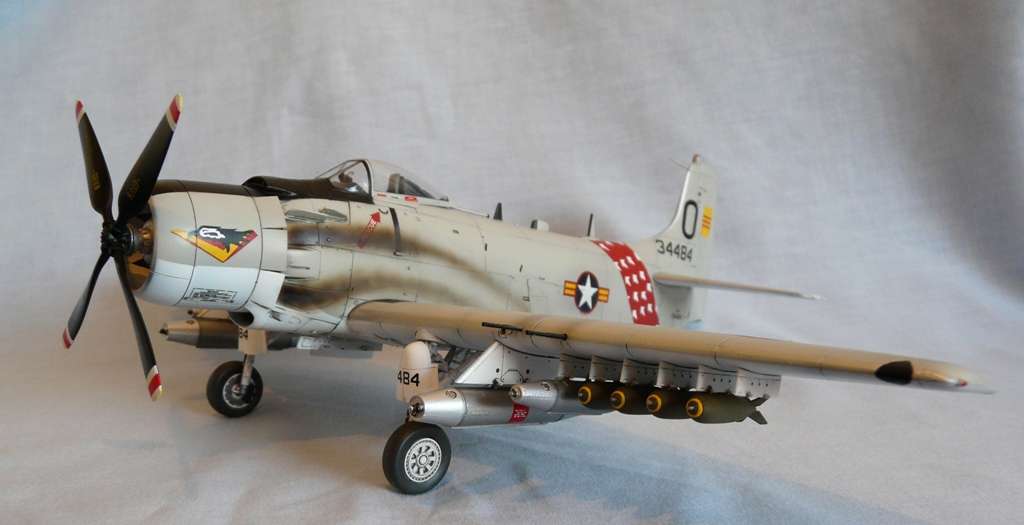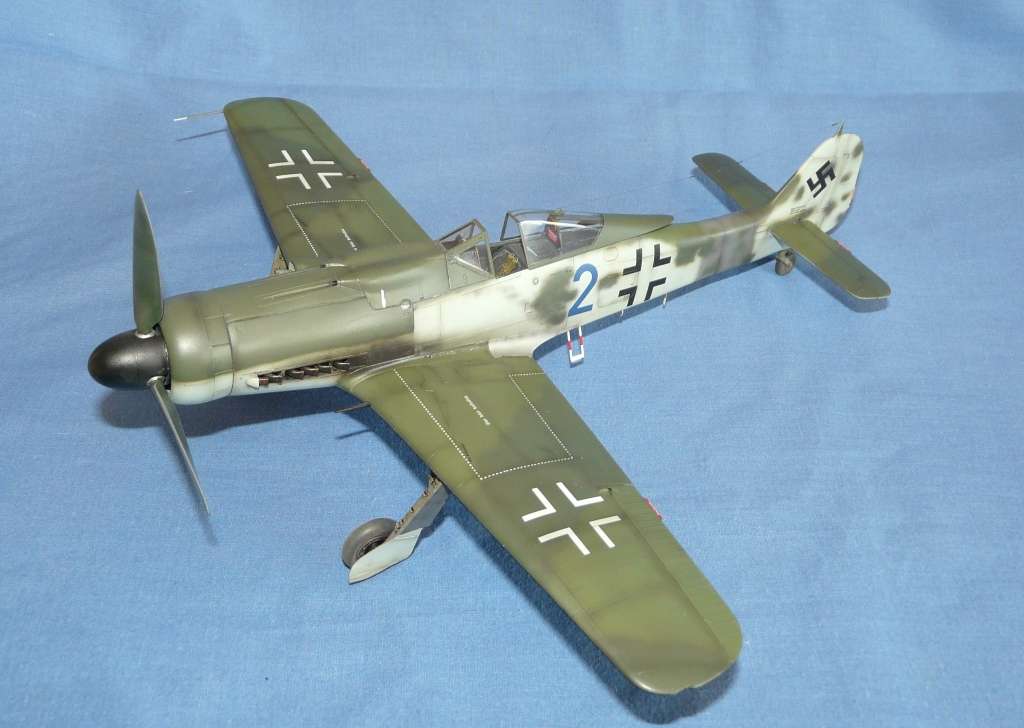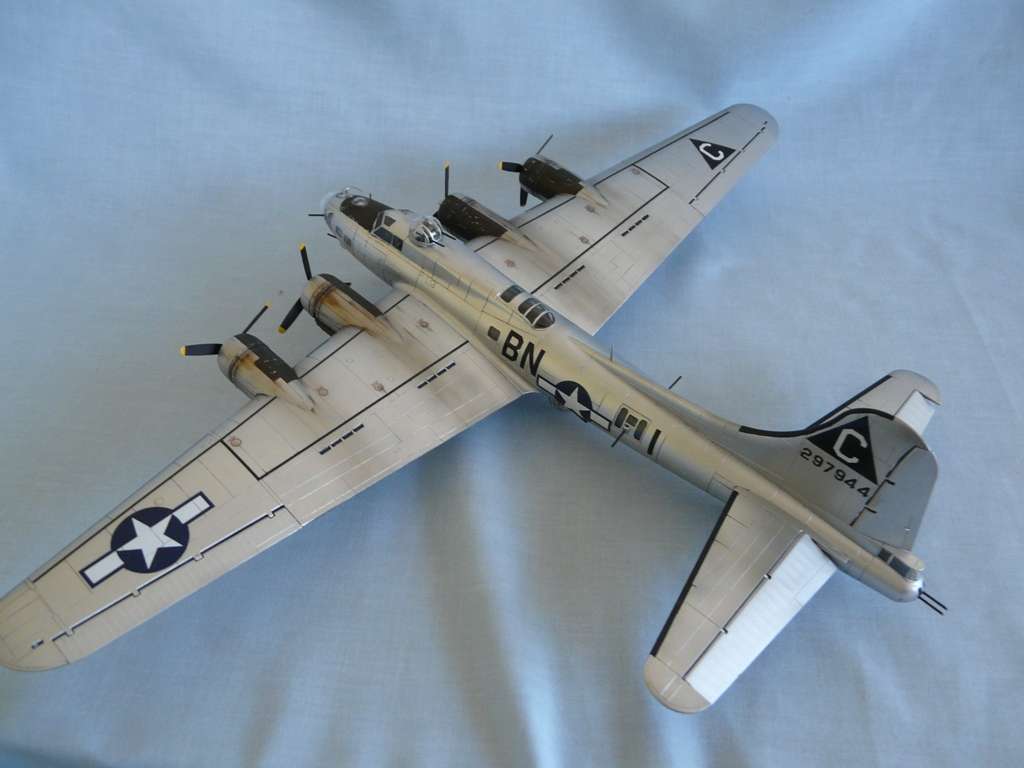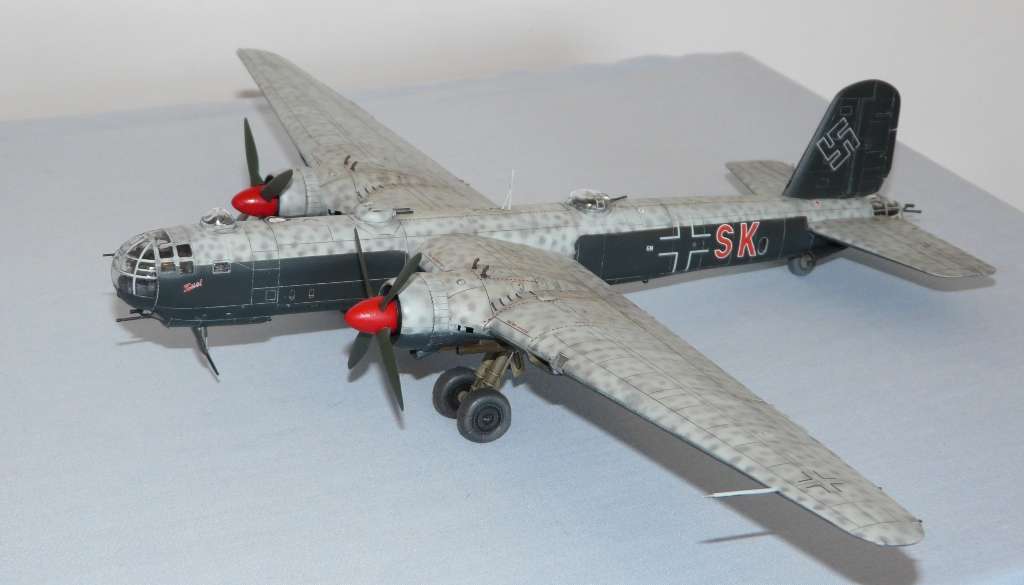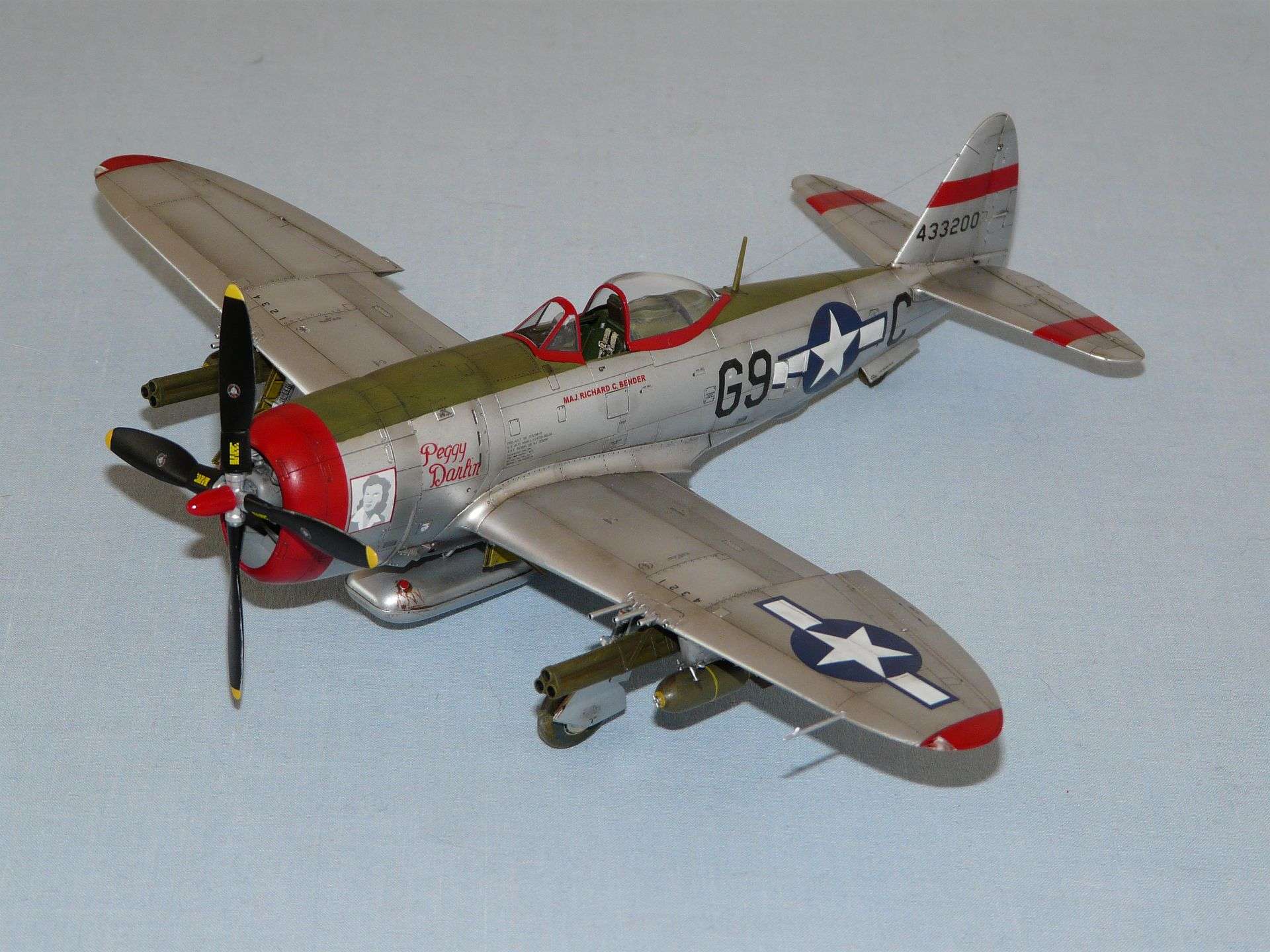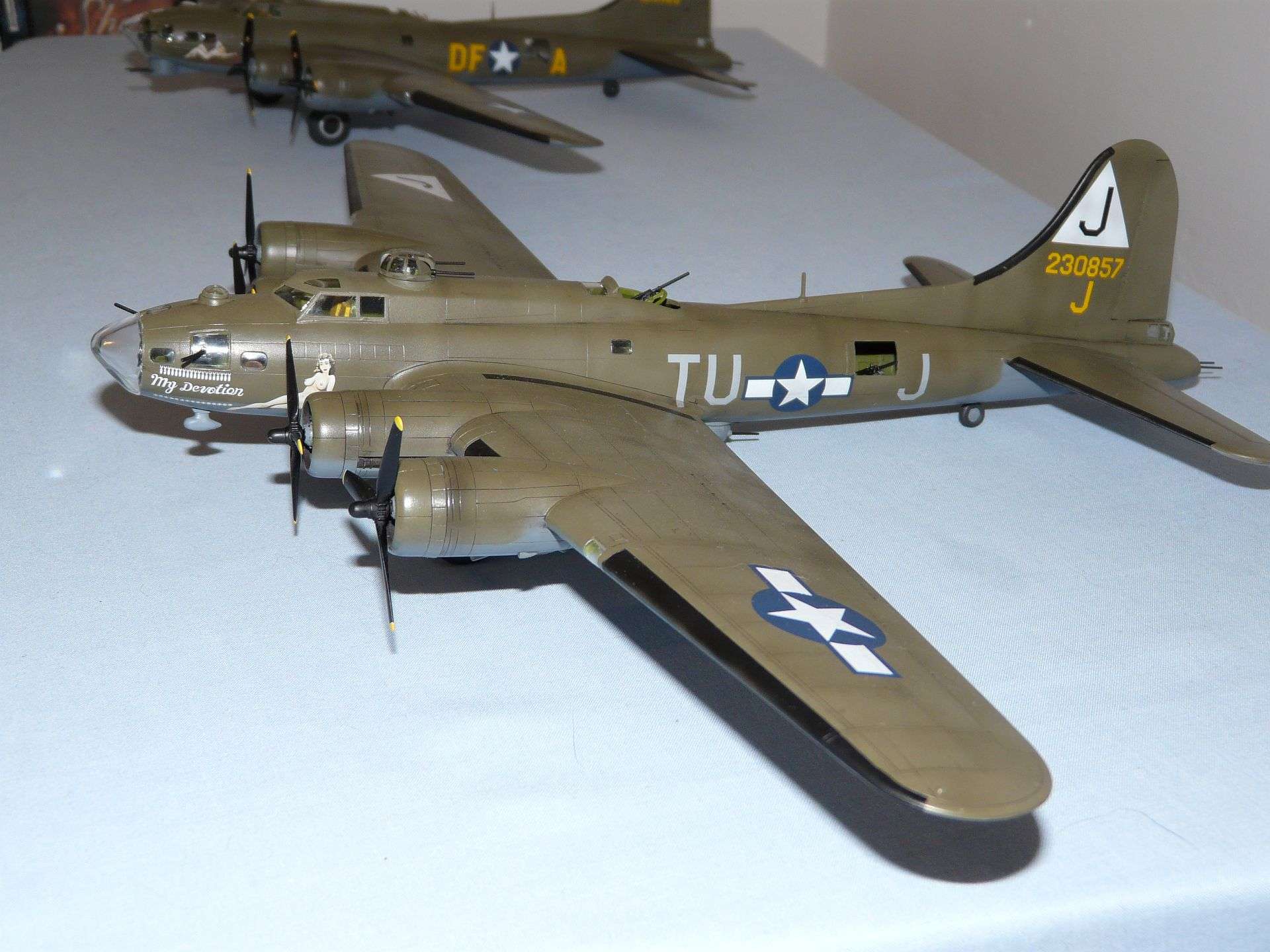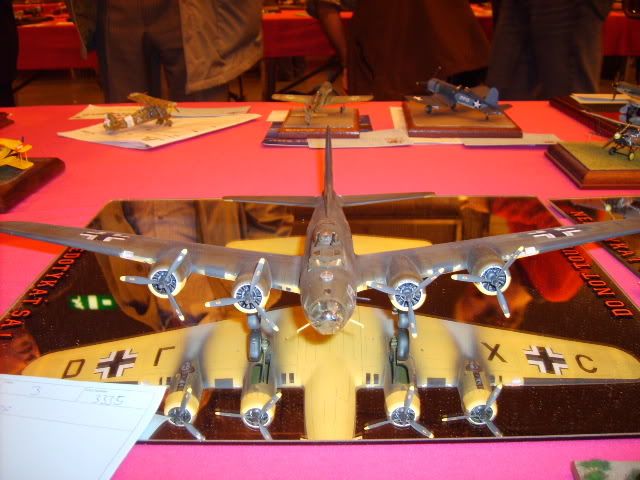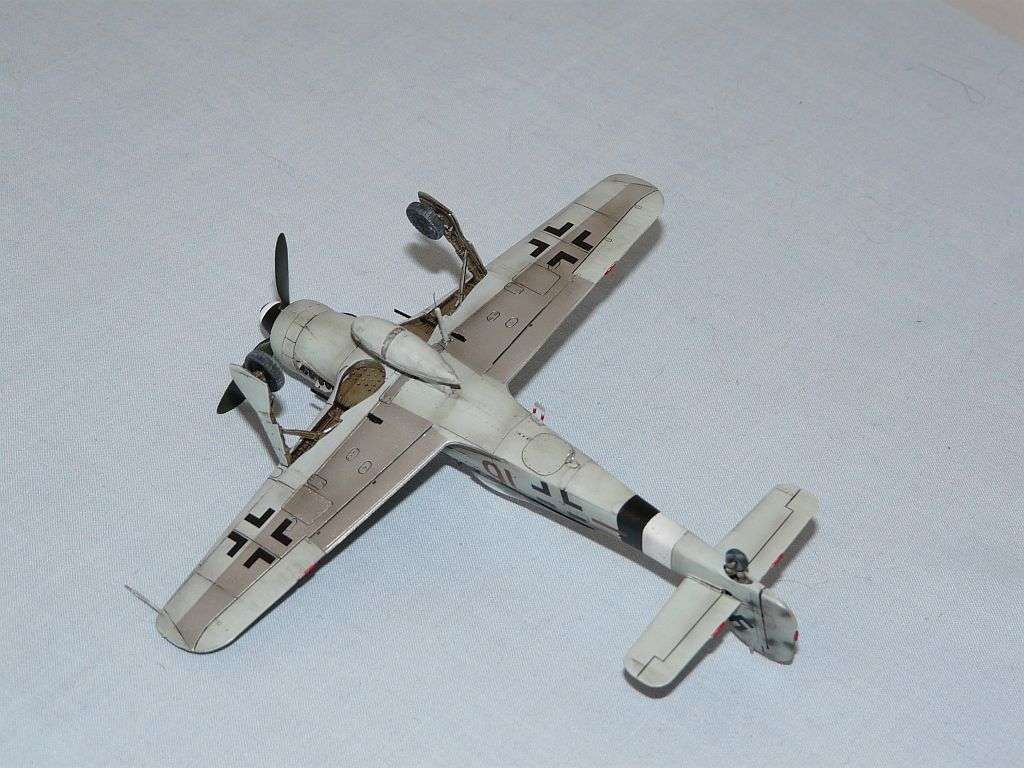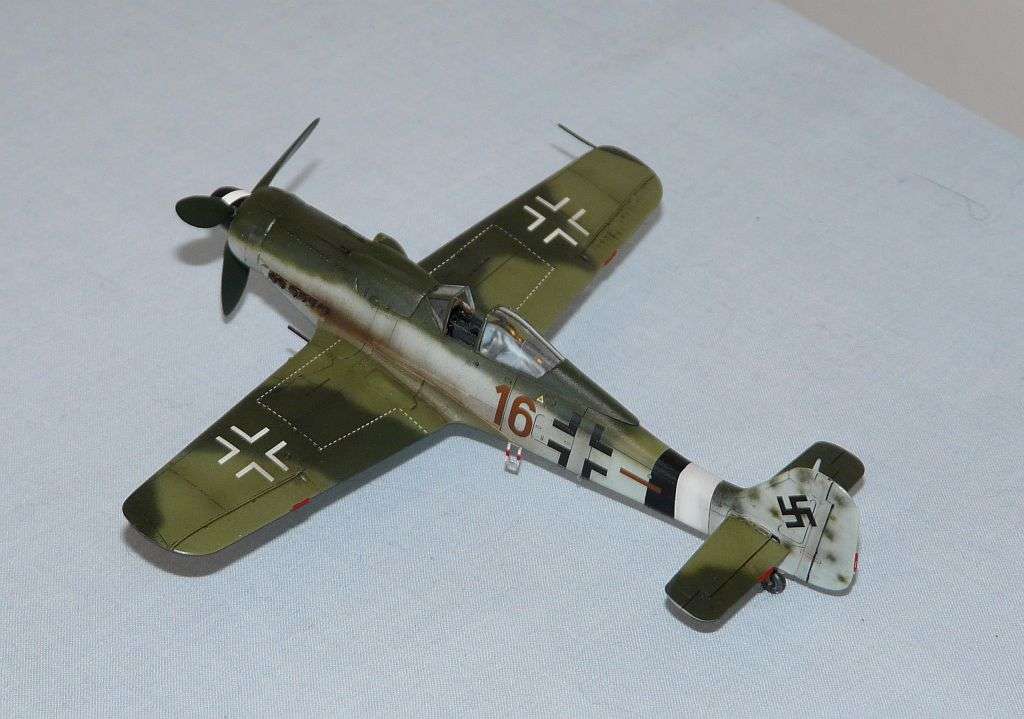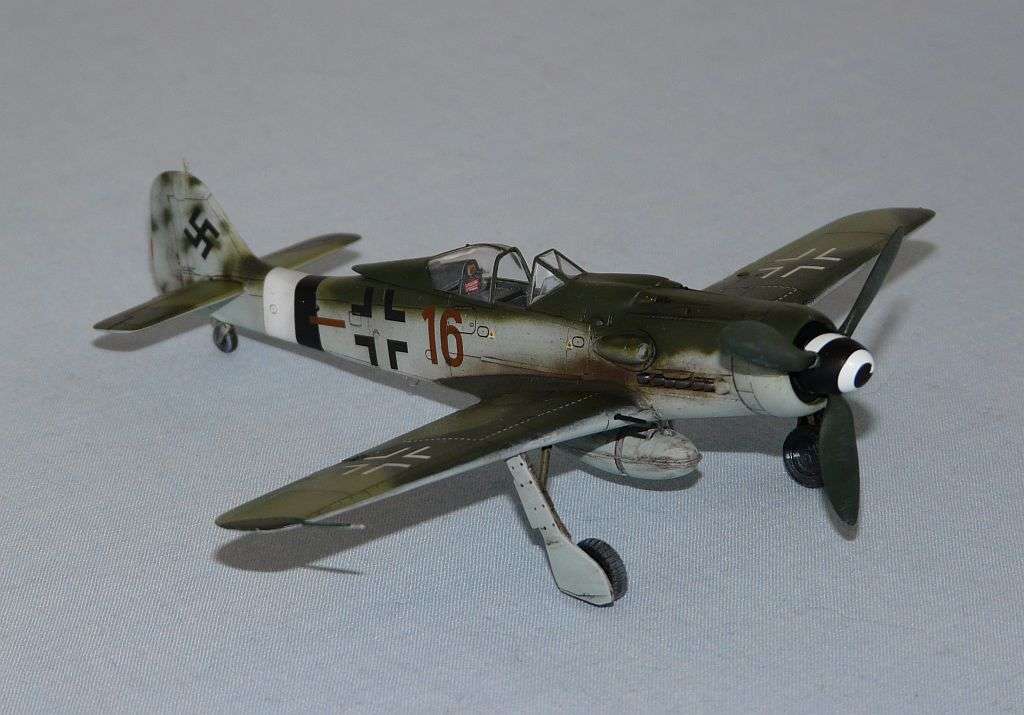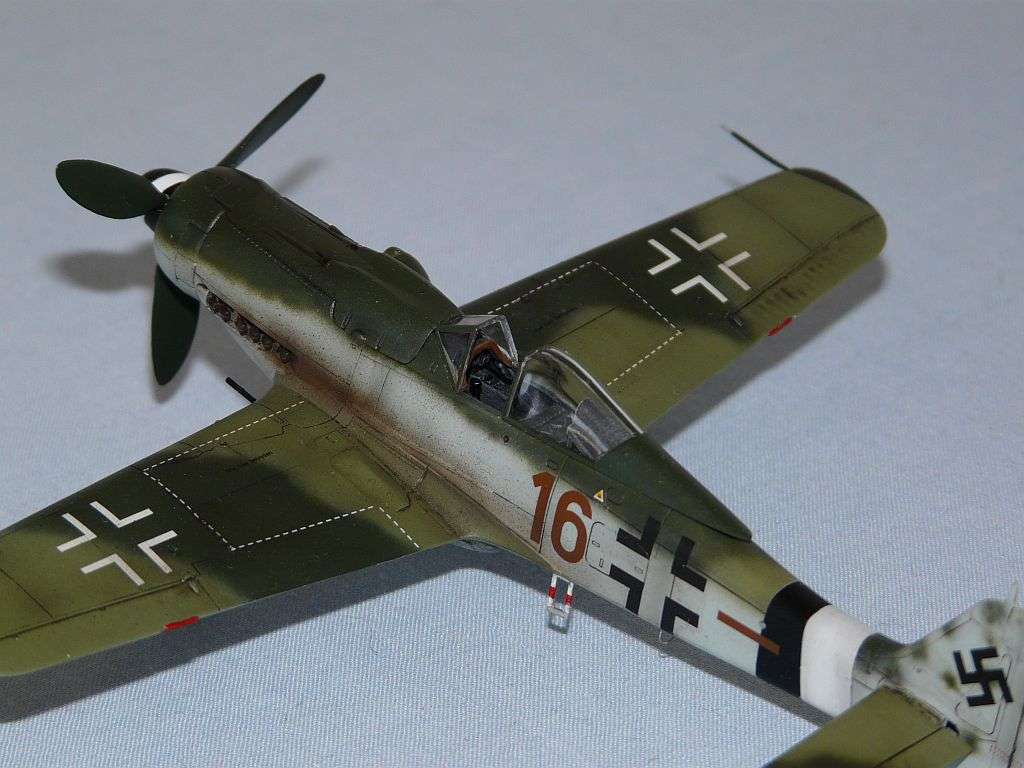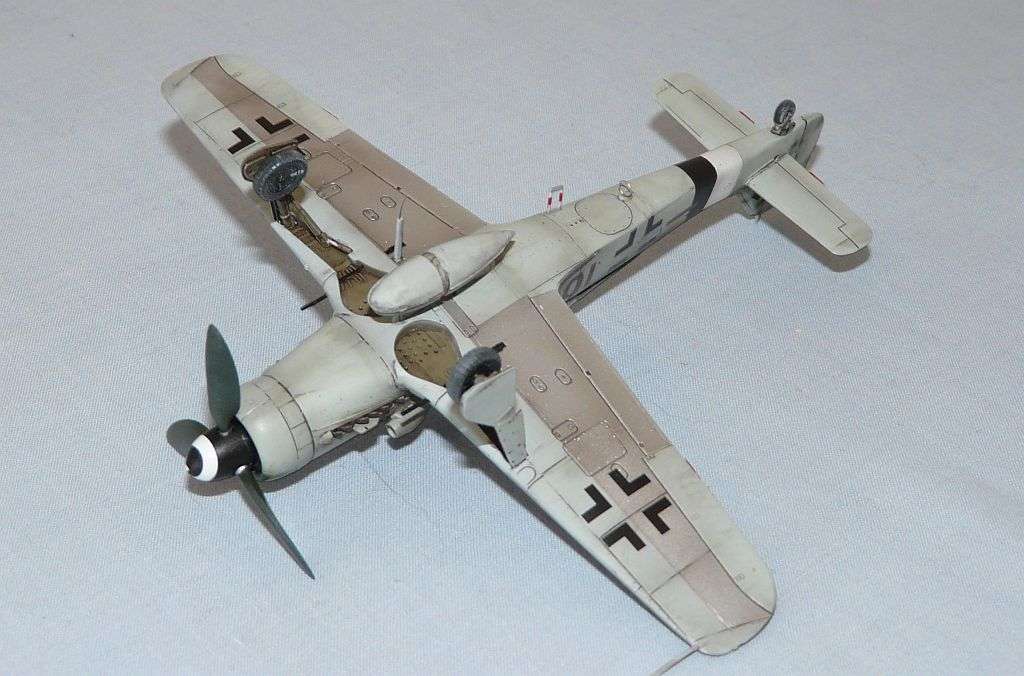Here is an unusual subject; A Focke-Wulf 190D-9 fitted with a wooden Ta-152 tail unit. There are documented pictures of at least two machine built like this but apparently this configuration was limited to a mere handful of aircraft, after a problem with delivery of standard tail units from a sub-contractor. Perhaps because of the unusual nature of the aircraft, there are many examples of this aircraft on modelling websites.
Eduard's kit of the Dora has been out a little while now and has been very popular. In the box you're provided with photo-etch details, pre-cut masking and a lovely decal sheet. This was my first attempt at the kit and I found the experience to be very similar to what other modellers have had. The model is easier to build than Eduard's Fw190A series but it still needs care when building. I found the area between the cockpit, the engine bay and the nose mounted guns to be very tight on the tolerances of fit. Remember, fit twice, glue once! I left off the detail parts for the nose mounted machine guns as they impair the correct fit of the gun cover.
I also had to take care with the wing main spar/undercarriage bays, as you basically construct this area bit by bit, and any misaligned part by here will cause a lot of pain later in the build. To ensure the fuselage/wing join was good, I took the unusual step of sticking the upper wing halves to the fuselage first, then attaching the lower wing piece after.
As they come in the box, the wing root cannon covers will not fit in the closed position so I sanded them down. Basically if you're looking to build an Eduard Focke Wulf with all the covers buttoned up, be prepared to do a little bit of work to achieve it.
.
I chose to model the option provided in Eduard's boxing that has some unverifiable sources to prove its existence, so in many respects its impossible to say I've built the model inaccurately (my kind of modelling!). I followed the instructions and used RLM76/81/82. This aircraft is finished with the same camouflage as other Mimetall factory Doras that were in the same production batch. The RLM76 light blue extends to the upper wing surfaces in place of a more regular upper surface colour such as RLM 83. Secondly RLM81 covers the forward section of the lower wing, with unpainted natural metal immediately behind it. This ramshackle appearance was not uncommon on late-war German aircraft, as the stresses of war took their toll.
.
.















